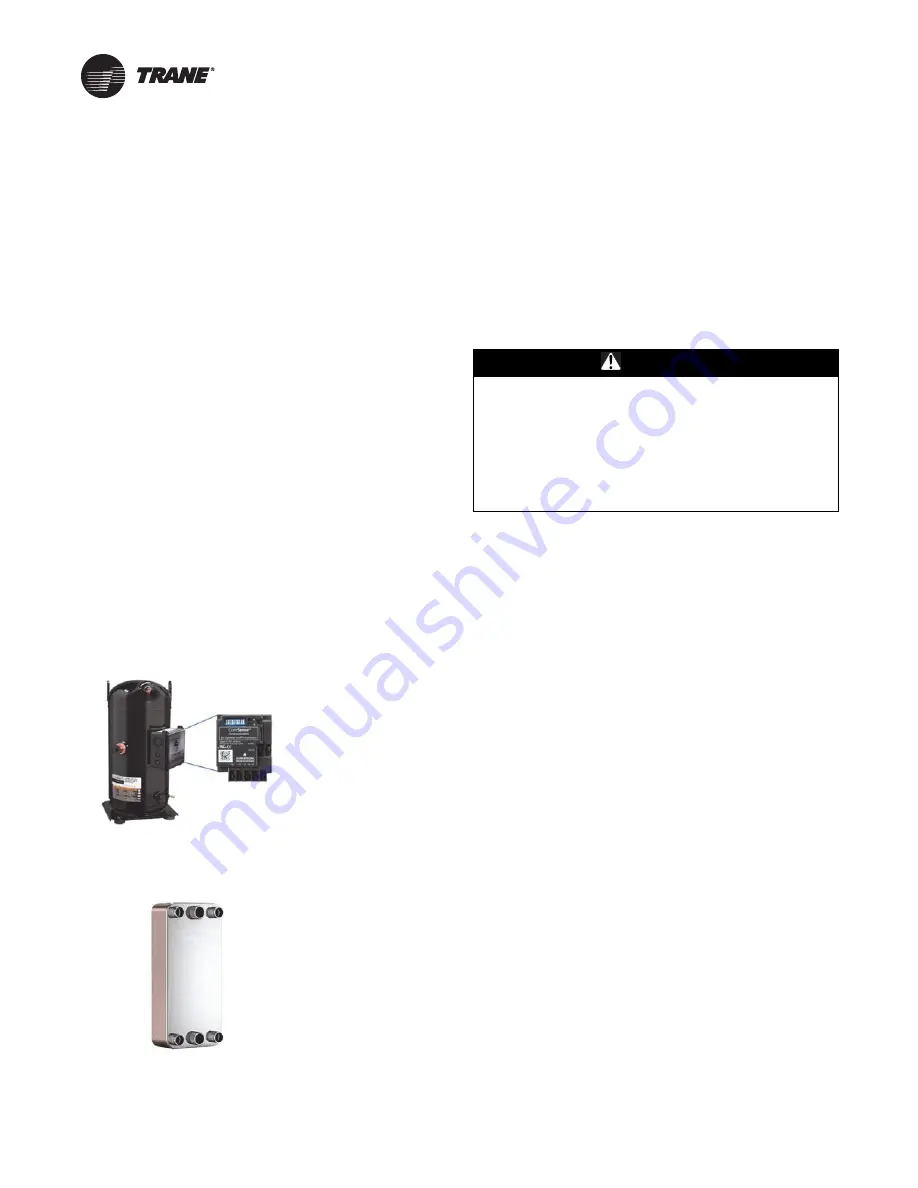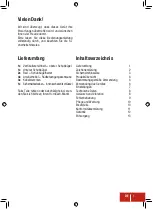
8
ARTC-SVX002A-EN
Chiller Description
Chiller Scope
This manual provides relevant data to properly operate,
maintain, and troubleshoot the Trane Manhattan™ Gen II
Water-Cooled Modular Chiller. It assumes that operator
and maintenance personnel must be a qualified
refrigeration technician and have a working knowledge of
high voltage systems, low voltage control circuits, and
fluid system components and functions.
Chiller Capacities
The Manhattan™ Gen II Chiller model is available in 10-,
12.5-15-, 20-, 25-, 30-, 40-, 50-, 60-, and 80-ton capacity
modules. Upto 10 modules may connect together in a
standard client/server control system. The system
consists of a client chiller module that contains the client
microprocessor controller, the power distribution panel,
one or more server modules, an optional tank and pump
module with a glycol feed system, and expansion tank or
sealed buffer tank, an optional free-cooling module (air
cooled module). It is important to connect modules in the
correct sequence as detailed in Handling of the Modules
section of the Installation Mechanical chapter.
The Manhattan™ Gen II Chiller uses independent
refrigeration circuits in each module using scroll
compressors. Models are available with either brazed-
plate or shell-and-tube evaporators. The brazed-plate
evaporator is typically made of SAE Grade 316 stainless
steel and 99.9% copper brazing materials. Standard
interconnecting headers are composed of carbon steel.
Water quality must be monitored and maintained by a
water treatment professional familiar with the materials of
construction and operation of the equipment. The chiller
modules arrive fully charged with refrigerant. As required
under Federal regulations, installation, initial start-up, and
technical servicing should only be performed by fully
qualified personnel.
Component Description
Every chiller is comprised of four basic components:
compressor, condenser, expansion valve, and evaporator.
Each Manhattan™ Gen II Chiller module contains one or
more of these primary refrigeration components.
WARNING
Hazardous Voltage!
Failure to disconnect power before servicing could
result in death or serious injury.
Disconnect all electric power, including remote
disconnects before servicing. Follow proper lockout/
tagout procedures to ensure the power can not be
inadvertently energized. Verify that no power is present
with a voltmeter.
Copeland Compressor
For chillers larger than ten tons, the Copeland scroll compressor with CoreSense
technology is a state-of-the-art compressor with relay and overload monitoring
capabilities designed to accommodate liquids (both oil and refrigerant) without
causing compressor damage. The Copeland compressor uses the CoreSense
technology as a sensor to unlock advanced capabilities such as protection,
diagnostics, communication, and verification. Technicians can make faster, more
accurate decisions resulting in improved compressor performance and reliability.
Brazed Plate Condenser
The condenser is a key chiller component that receives refrigerant in the form of gas
from the compressor and changes it to liquid that absorbs the heat dissipated by a
cooling tower or ground source well system.









































